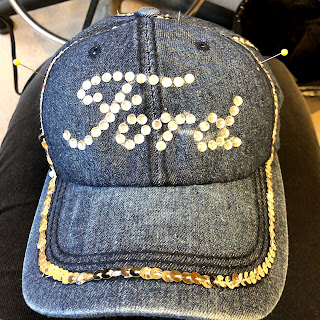Alternatives to gendered language in the costume shop
Uniform hat worn by all performers in Henry Ford's number in Ragtime.
Recently, someone shared this blog post to one of the professional costume groups I follow on Facebook, and a discussion ensued about proactive ways in which we might make the costume shop, fitting rooms, and wardrobe spaces more welcoming in terms of gender diversity. In the original post, Woodzick shares a lot of great suggestions (and also thoughtless and mortifying behavior they have witnessed). In the FB discussion (not linked bc it's a closed group), I shared some initiatives we've undertaken at UNC-Chapel Hill's dramatic art department and PlayMakers Repertory Company, and thought I might share that same info here for open readership.
Gender-neutral terminology
We've eliminated the use of gendered terms in reference to shop supplies. Many of us came up in shops which used "male" and "female" to refer to the two parts of a snap or a grommet. We've relabeled our snap storage and adopted the terms "prong" and "socket" instead. For grommets, we use "post" and "disk" or "ring". For rivets, we use "post" and "button".We've eliminated gendered terms in job titles as well--stitcher or seamster instead of seamstress, wardrobe supervisor instead of wardrobe mistress, props supervisor instead of prop master, etc.
Small changes make a big difference
Our measurement sheets are non-binary (so a draper will take only the relevant measurements for any given performer) and now include a space in the routine questions (allergies, tattoos, piercings, etc.) for the performer's pronouns.We are bound by the architecture in terms of our dressing room spaces, but because our theatre actually has five demarcated dressing spaces for the MainStage and two more for our black box, we've been able to come up with respectful room assignment arrangements for the comfort of all cast members. We ask our performers what dressing arrangements will support their ability to do their best work and do our best to accommodate.
What are some other suggestions you can think of to create a more welcoming space for all?



Comments
Post a Comment